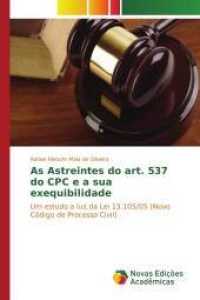Description
(Text)
The Max Planck Institute for Chemistry (MPIC) in Mainz is one of the major pillars of atmospheric and Earth system research in the Max Planck Society and in Germany. This study provides insights in the history of establishing and developing these scientific fields at the MPIC.
The book leads the reader through the re-orientation process of the institute starting in the late 1950's until 1968 when Christian Junge was appointed as director of the new department of atmospheric chemistry, which still exists today.
Furthermore, it discusses the development of Junge's department in the context of German research in the 1970's. There, a new integrative approach of research was established in connection to the collaborative research program 73 "atmospheric trace-gases", sponsored by the German Research Foundation.
The final chapter is subdivided into two parts and deals with the expansion of Earth system science at the MPIC after the era of Christian Junge. Part one deals with the establishment of biogeochemistry in the middle of the 1980's under the leadership of Meinrat O. Andreae, with a focus on large-scale biomass-burning campaigns, and on feedback-loop mechanisms in the Earth system. Part two is dedicated to Nobel Laureate Paul Crutzen's studies of the human influence on the Earth system from the early 1970's until the year 2000, including topics such as supersonic air transport, chlorofluorocarbons, the ozone layer, nuclear winter, and the Anthropocene as a new geological epoch.
(Table of content)
Table of Contents
Preface Introduction 1 Institutional change between tradition and innovation: The MPIC 1959-19681.1 Initial situation at the end of the 1950s1.2 The "Appointments to the MPIC" Committee1.3 Crisis and "Future of the MPIC"1.4 Restructuring of the MPIC: Laying the foundation stone of an Earth System Science Institute1.5 Summary of the Establishment of Atmospheric Chemistry at the MPIC 2 The MPIC under the leadership of Christian Junge, 1968-19782.1 The beginnings of the departments for Atmospheric Chemistry and Cosmochemistry2.2 The SFB 73 and the MPIC in the context of the consolidation of atmospheric sciences in the FRG 3 Atmospheric chemistry and Earth System research under the leadership of Paul J. Crutzen and Meinrat O. Andreae, 1980-20003.1 "Geochemistry in the broadest sense": Restructuring of the MPIC at the end of the 1970s3.2 From atmospheric chemistry to Earth System chemistry3.3 The CLAW hypothesis: Research on the basis of an "Earth System theory"3.4 From the examination of anthropogenic influences to the "Anthropocene"3.4.1 Influences of air traffic on the atmosphere3.4.2 NOx, CFCs and the discovery of the ozone hole3.4.3 Studies on the "Nuclear Winter"3.4.4 The Anthropocene and responsibility: Is geo-engineering a way out? Findings and outlook Author Acknowledgments AppendixFiguresUnpublished literaturePublished literatureInternet resourcesAbbreviations Index







